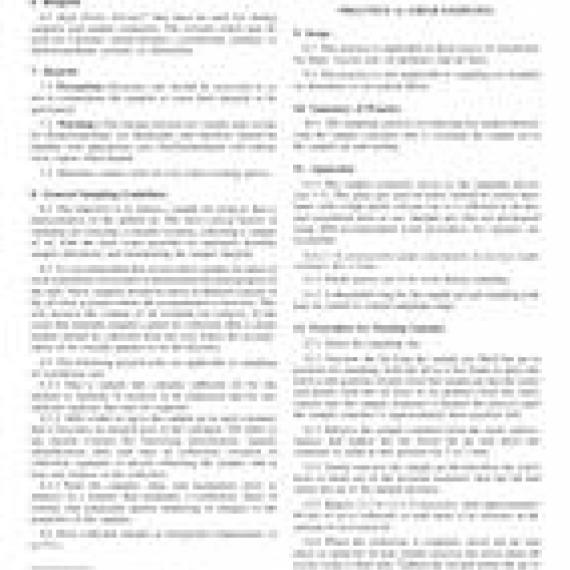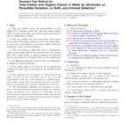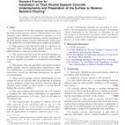No products
ASTM D4489-95(2017)
ASTM D4489-95(2017) Standard Practices for Sampling of Waterborne Oils
standard by ASTM International, 12/15/2017
Full Description
1.1These practices describe the procedures to be used in collecting samples of waterborne oils (see Practice D3415), oil found on adjoining shorelines, or oil-soaked debris, for comparison of oils by spectroscopic and chromatographic techniques, and for elemental analyses.
1.2Two practices are described. Practice A involves grab sampling macro oil samples. Practice B can be used to sample most types of waterborne oils and is particularly applicable in sampling thin oil films or slicks. Practice selection will be dictated by the physical characteristics and the location of the spilled oil. These two practices are:
| Sections | |
| Practice A (for grab sampling thick layers of oil, viscous oils or oil soaked debris, oil globules, tar balls, or stranded oil) | 9 to 13 |
| Practice B (for TFE-fluorocarbon polymer strip samplers) | 14 to 17 |
1.3Each of the two practices is designed to collect oil samples with a minimum of water, thereby reducing the possibility of chemical, physical, or biological alteration by prolonged contact with water between the time of collection and analysis.
1.4The values stated in SI units are to be regarded as standard. No other units of measurement are included in this standard.
1.5This standard does not purport to address all of the safety concerns, if any, associated with its use. It is the responsibility of the user of this standard to establish appropriate safety, health, and environmental practices and determine the applicability of regulatory limitations prior to use. For specific hazards statements, see Section 7.
1.6This international standard was developed in accordance with internationally recognized principles on standardization established in the Decision on Principles for the Development of International Standards, Guides and Recommendations issued by the World Trade Organization Technical Barriers to Trade (TBT) Committee.


































